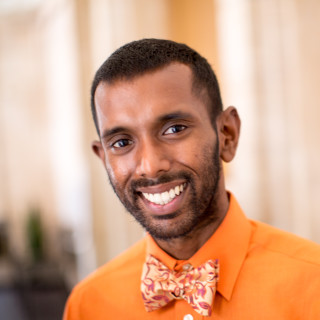
The woman who lived next door came out of her apartment only once during the eleven years I spent growing up in Sri Lanka. Her husband and children locked her inside as they left for work and school. Often, I would push my ear against my bedroom wall trying to construct the story of the woman caged within her own home. I did get to know her, not through sight or words, but through the rumbling of her steps, the aroma of her cooking, and the sounds of her voice.
She was a woman of routine. During the weekdays she would awake at five, say her prayers by five thirty, and dress her children by six thirty. Her husband took the children to school at seven. She would be mostly silent till eleven at which time she begins preparing lunch. At exactly three she would wait by the door to welcome her children home. Then at four, she would recite her evening prayers in time to start dinner by five.
Her structured day was in stark contrast to her nights. The calm or clamor of the night depended on the mindset of her husband. On nights when she was particularly nervous, I would hear her frantically walk up and down her living room. And then at eight, when the sound of her husband's keys rattled at the door, her whole house falls silent.
Most days the beating started around nine. The leather belt slashed across her body as she begged for him to stop. She tried tirelessly to numb her pain with intermittent prayers to God. But God was nowhere to be found. Her whimpering would slowly transform into loud cries vibrating the thin walls that separated us.
Her cry became the voice of my childhood. She cried for the abused women who were too tired to cry. She cried for the Sri Lankan people scarred and silenced by the ravaging civil war. And she cried for the child in me that was perpetually frightened by the realities of violence around me. In a civil war that splintered families, destroyed homes, played with my psyche, and questioned my humanity, this woman's ability to cry was a constant reminder that I too was still human, that I too had the ability to feel.
Then came the day when her husband knocked on our door. He stood there at the entrance with a woman whose face was severely burned. Though it was the first time I laid eyes on her, I recognized her immediately. He explained that they needed a ride to the hospital. He had tried to set her hair on fire, but the fire had spread out of control to the rest of her body. As I watched her be escorted out of our apartment building, I was convinced this would be her chance at freedom.
However, she returned home a month later, only to find her circumstance unchanged. And then on a Sunday morning, while I was packing my bags to leave for America, I heard her laugh. It was the first and last time I heard her laugh. The tone, pitch, and character of that one laugh quickly became engraved in my mind. As I boarded the plane that day I wondered what it was that made her laugh. I secretly hoped it was the laugh of having found peace.
When I returned to Sri Lanka a decade later, I searched for her. She was nowhere to be found. The neighbors said they had not seen her since the day her face was burned. She had somehow disappeared within the four thin walls that caged her.
To the woman who had taught me so much about being human, wherever she may be, may she have finally found the liberating force of freedom and the warmth of a genuine love.
As a physician, I bear witness to women with similar experiences almost weekly and observe the direct downstream effects of experiencing violence on their physical and mental health. Sadly, domestic violence continues to affect a large segment of both the American and global population. The silence and stigma associated with violence makes elicitation of trauma a difficult process, but with continued awareness and consistent attempts to screen all people for experiences of violence we as a health care system can inch closer to identifying and serving a segment of population that balances death and life, fear and freedom in their day-to-day lives.
Jerome Chelliah is a resident physician in Obstetrics and Gynecology and a 2018–2019 Doximity Author.







